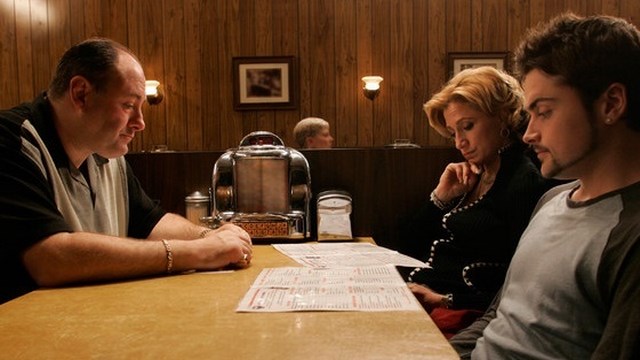Warning: This post contains spoilers for the series finale of The Sopranos. That is, if it hasn’t already been spoiled for you in the past 48 hours.
Yesterday, Martha P. Nochimson wrote a fantastic piece for Vox about Sopranos showrunner David Chase. If there is an award for articles on the Internet, I believe this article should receive it. It has a few brilliant interactive moments (mainly with its own cut to black), but most importantly, it cuts to the core of this great artist. It digs deep into his thoughts on art, and grazes his own mortality.
Unfortunately, you might not have known that from the headline “Did Tony die at the end of The Sopranos?” as well as the ensuing media coverage which focuses solely on Chase’s one sentence response. After countless think pieces, angry tweets, and a response from Chase’s publicist, it is safe to say that what should have been a harmless article caused a firestorm. It caused a dormant volcano to erupt. The Sopranos ended in 2006, and nobody has gotten over it since.
Just to briefly recap, The Sopranos ends as the Soprano clan sits to eat dinner at Holsten’s. For the first time in a long time, it seems like Tony is relatively safe. Yet, everybody in this diner seems like a suspicious figure. Suddenly, Meadow bursts through the door, the music stops, and the show abruptly cuts to black. Then the credits roll, and TV history is made.
Ever since, people have gone back and forth arguing about whether Tony survived to eat another onion ring. According to this article, Tony is not dead. This is what Chase is so upset about, as he believes the writer misconstrued his remarks. However, if you keep reading, you will see that the article is actually in defense of ambiguous endings.
Ambiguous endings are always controversial. Art, in its simplest form, is escape. Life offers no easy answers and thus, art should answer everything for us. Every once in a while, somebody like David Chase comes along and defies this logic. I watched The Sopranos series finale when it first aired (I had very little context then), and I could see why everybody felt like they got ripped off. That is also how I felt the first time I saw No Country for Old Men. It is how everybody felt just a few months ago when a beloved Game of Thrones character was unexpectedly killed off. It is natural to feel angry upon first viewing of an ambiguous ending.
And here is the great thing about ambiguous endings: you can have many reactions to them, because you will want to keep watching them over and over again. You will watch them again, think about them, and talk about them endlessly. There is a reason that we are still talking about The Sopranos nearly a decade later. Even after David Chase gave his answer, we are still going to talk about it, because being alive could mean so many things. It could mean that Tony went on to have a good life, or that he just continued to be the “miserable fat f**k” that he always has been. By ending with a comma, Tony Soprano lived on forever, and life or death will never impact that.
It is just too bad that the rest of this article had to be obscured by this one little thing. Unfortunately, a lot of interesting talking points about The Sopranos have been overshadowed by that cut to black. Even in the finale alone, there is a lot nobody talks about. Nobody ever asks David Chase about whether or not that mysterious cat was supposed to represent Christopher. Nobody ever asks him about the scene where AJ accidentally blows up his car. Hell, nobody ever asks him about the genius bit of black comedy that is Phil Leotardo’s death. Then again, this whole controversy works in Chase’s favor. After all, the article briefly mentions that he is going into pre-production on a new film called Little Black Dress. Hey, sometimes bad PR pays off.
Anybody who is an aspiring storyteller in any way, shape, or form should follow David Chase’s example. Now, I don’t think all movies and TV shows should end unresolved. However, I do think that art can find ways to be more true to life, such as acknowledging the idea of loose ends. Life is full of unsolved mysteries. Sometimes, it doesn’t hurt to end in the middle of

